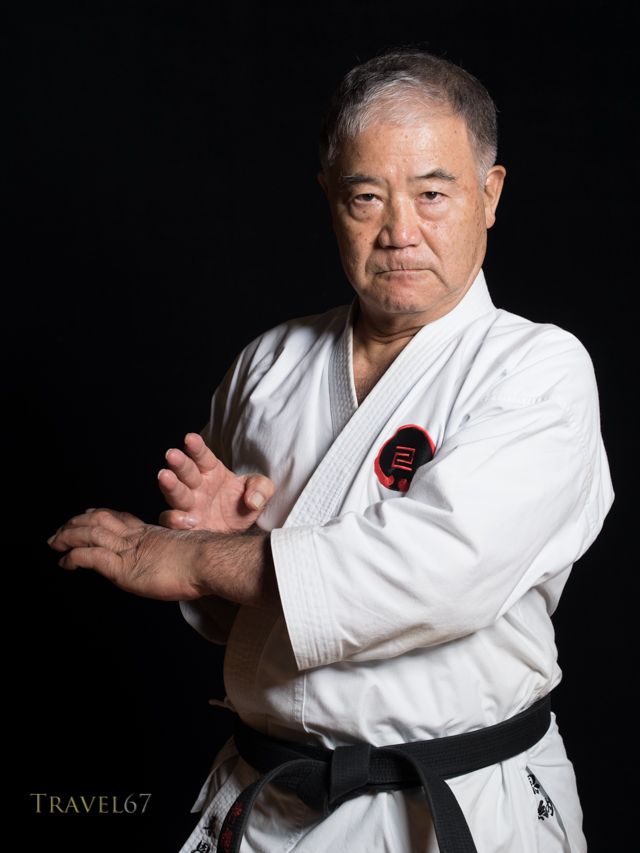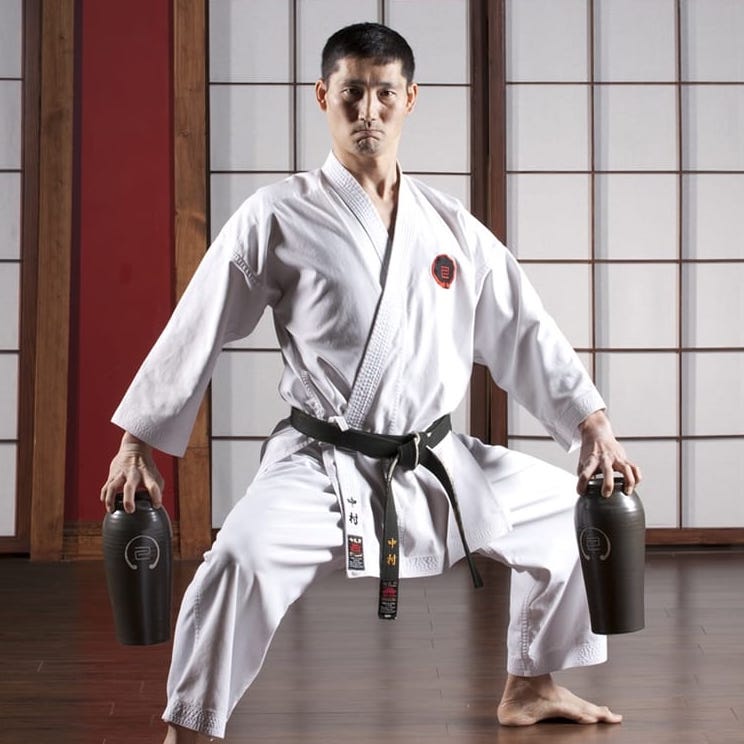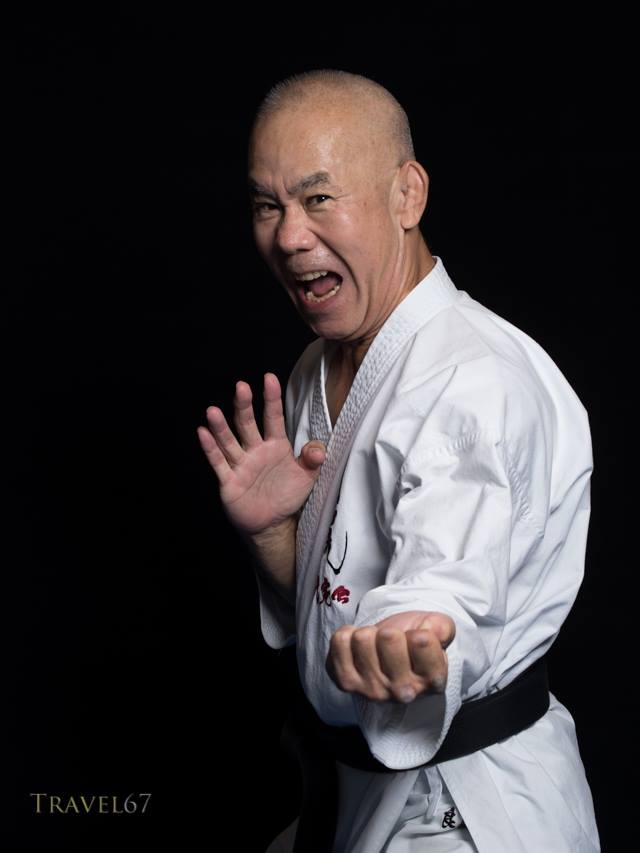Goju Ryu Karate
Goju Ryu 剛柔流 means "Hard Soft Way/Style" and refers to a style of karate systematized by Chojun Miyagi. Goju Ryu is a close in fighting system and features a variety of throws, locks, takedowns, grappling techniques and of course, kicking, punching and striking techniques.
The Naming of Goju-Ryu
Sensei Miyagi Chojun chose the name Goju-Ryu from the third of the Eight Precepts of the Bubishi from traditional Chinese Kempo:
- The mind is one with heaven and earth.
- The circulatory rhythm of the body is similar to the cycle of the sun and the moon.
- The way of inhaling and exhaling is hardness and softness.
- Act in accordance with time and change.
- Techniques will occur in the absence of conscious thought.
- The feet must advance and retreat, separate and meet.
- The eyes do not miss even the slightest change.
- The ears listen well in all directions.
Goju-Ryu Precepts
- It should be known that secret principles of Goju Ryu exist in the kata.
- Goju Ryu Karate-do is a manifestation within one's own self of the harmonious accord of the universe.
- The way of Goju Ryu Karate-do is to see the way of virtue.
Miyagi Chojun Sensei
Significant People
Chojun Miyagi
The creator of Goju Ryu. Read more about him on this page
Kanryo Higaonna
Also known as Kanryo Higashionna, or Higashionna of the east. He was the teacher of Chojun Miyagi.
Shinzato Jin'an
One of Chojun Miyagi students, he died during WWII.
An'ichi Miyagi
Student of Chojun Miyagi and Sensei of Higaonna Sensei.
Sensei Shuichi Aragaki
Student of Chojun Miyagi and Sensei of Nakamura Sensei.
Morio Higaonna - IOGKF Founder

Master Higaonna began studying karate at a young age, being taught Shorin-Ryu karate at home by his father. He later began formal sessions taught by Tsunetaka Shimabukuro who introduced Higaonna to the Goju system. Higaonna went to the garden Dojo of Miyagi Chojun, where he began training in Goju-Ryu under An'ichi Miyagi. Morio Higaonna moved to Tokyo in 1960 to attend Takushoku University and there began teaching Goju Ryu karate. He opened the Yoyogi Shurenkai Karate Dojo, which became well known in the international martial arts community. Higaonna later created the IOGKF to help promote Goju-Ryu throughout the world.
Tetsuji Nakamura - IOGKF World Chief Instructor

Master Nakamura began his training in Goju-Ryu Karate over 30 years ago in Okinawa, Japan – where Karate originated from. He was trained under the instruction of Sensei Shuichi Aragaki – a master who was trained by none other than the Goju-ryu style founder, Master Chojun Miyagi. Sensei Nakamura’s ability and persistence was quickly recognised; over the course of his Karate training he has attained a total of 3 world championships in kata (forms - 1 championship) and kumite (sparring - 2). He was previously engaged as a head-assistant instructor under Master Morio Higaonna, who was the former World Chief Instructor of IOGKF before the place was passed down to Nakamura in 2012. Other prior positions that Nakamura achieved were: technical advisor for IOGKF Canada, Chief Instructor for IOGKF Canada & North America and Administrative Director for IOGKF International. Like Master Higaonna, Sensei Nakamura continues to spread the word of Goju-Ryu and holds regular international Karate seminars.
Eiichi Miyazato
Student of Chojun Miyagi. He ran the Jundokan dojo.
Masaji Taira

9th dan and former student of the Jundokan under Eiichi Miyazato. He founded and currently runs the Goju Ryu Kenkyukai.
Kata
See Kata for information on Goju Ryu kata.
Bunkai
See Bunkai for information on the bunkai of Goju Ryu kata.
Grading System
See Grading
The Badge

Heaven and earth are described as “kenkon” in Japanese. “Ken” indicates heaven and “kon” indicates earth. Heaven is shown as round and earth as square, symbolising the vastness of heaven and earth. Heaven relates to softness and earth to hardness. The badge expresses harmony of hardness and softness in nature - heaven and earth.
The meaning of “Goju” is directly related to the badge since this also means hard and soft – “go” meaning hard and “ju” meaning soft. No emphasis is placed upon Chojun Miyagi since the idea stands from an international point of view. However, it is necessary to explain that the symbol within the circle is the family crest of the Miyagi family.